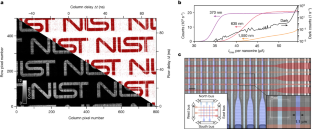2023-10-25 ヒューストン大学(UH)
◆研究では、小さな淡水と塩水の光感受性有機体であるミクロ藻類の特性に焦点を当てており、これらの藻類が二酸化炭素を大気から吸収する能力に加えて、それを蛋白質、脂質、炭水化物に変換するプロセスに関心があります。この研究により、地球温暖化への対策において重要な役割を果たす可能性が示唆されています。
<関連情報>
- https://uh.edu/news-events/stories/2023/october-2023/10252023-algae-climate-co2algae-climate-co2.php
- https://pubs.rsc.org/en/content/articlelanding/2023/gc/d3gc02286b/unauth
微細藻類による二酸化炭素吸収とバイオ製品への加工の可能性 Potential of using microalgae to sequester carbon dioxide and processing to bioproducts
Venkatesh Balan, James Pierson, Hasan Husain, Sandeep Kumar, Christopher Saffron and Vinod Kumar
Green Chemistry Published:15 Sep 2023
DOI:https://doi.org/10.1039/D3GC02286B
Abstract
Algae are microscopic photosynthetic prokaryotic or eukaryotic organisms that can naturally grow in fresh or marine water in the presence of sunlight. Algae are capable of sequestering CO2 and utilize nutrients like nitrates, phosphates, and other micronutrients in water to increase their body mass. In the past few decades, algal biomass has been investigated by the scientific community because of its promising applications in producing renewable food, feed, fuels, and chemicals. Additionally, microalgae’s ability to fix large amounts of greenhouse gas (GHG) such as carbon dioxide (CO2) has led researchers to investigate microalgae as an alternative way of combating climate change by sequestering flue gas containing CO2 emitted from industries such as coal power plants, cement, steel, and petroleum refineries. This review outlines different sources of CO2 emissions and capturing technology including microalgae. Details about the methods of cultivating and separating the algal biomass followed by thermochemical and biochemical conversion to fuels/chemicals, microalgae-derived bioplastics, and microalgae biomass blended plastic are outlined in this review. Commercially viable continuous and semi-continuous biorefining processes such as hydrothermal flash hydrolysis and environmental benefits of using microalgae as carbon sinks and wastewater treatment are also provided.




